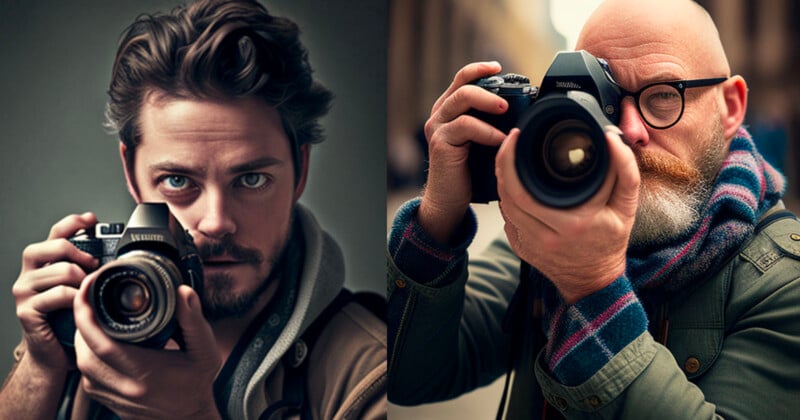AI Generated Image from Text is not Human Authorship says US Copyright Office

The U.S. Copyright Office has warned that an image generated solely from a text prompt does not qualify for human authorship in fresh guidance released yesterday.
The Copyright Office likened text prompts to “instructions to a commissioned artist.” Essentially comparing them to a magazine editor hiring a photographer.
However, the Office did not rule out recognizing copyright for AI in all cases: “An artist may modify material originally generated by AI technology to such a degree that the modifications meet the standard for copyright protection,” it writes.
This will pique the interest of photographers who have been using AI image generators to create realistic-looking “photos” and then improving them on programs like Adobe Photoshop.
Photographers like Tim Tadder have fallen in love with AI imagery and the commercial shooter is now exclusively posting eye-popping “photos” on his Instagram feed that came out of synthesizers like Midjourney instead of his camera.
The Copyright Office says it will apply its human authorship requirement on a “case-by-case inquiry.”
“In the case of works containing AI-generated material, the Office will consider whether the AI contributions are the result of ‘mechanical reproduction’ or instead of an author’s ‘own original mental conception, to which [the author] gave visible form,’ the Office writes in its guidelines.
“The answer will depend on the circumstances, particularly how the AI tool operates and how it was used to create the final work.”
AI Photographers
The rise of AI image generators has given birth to a new strand of photography. Images that look like real photos, but actually started life from a text prompt.
PetaPixel reported on two instances last month of Instagram pages posing as real photographers when they were in fact posting AI images, albeit ones that have been edited after being downloaded from Midjourney.
Jos Avery freely admitted his guilt after building a large Instagram audience by posting extremely believable portraits of people that don’t exist. While initially disguising the fact his images were AI, he is now more open about his process.
Explaining his workflow in a recent post, he says: “I come up with an idea. I’ll try a prompt to attempt to capture the idea. Nearly always, the AI is not initially getting what I’m wanting so I tweak the prompt.
“After generating, I have a pool of images to curate. I’ll enlarge the images, spot more defects, and pick the best of the best for realism and aesthetic.
“Then, I edit. There is too much to describe here but I hand composite five, 10, or more images using Photoshop. I digitally draw portions. I use Lightroom for final tweaks.”
Clearly, Avery is putting a lot of work into his creations and it would be fascinating to see what the Copyright Office would make of an attempt to get such images legal protection.